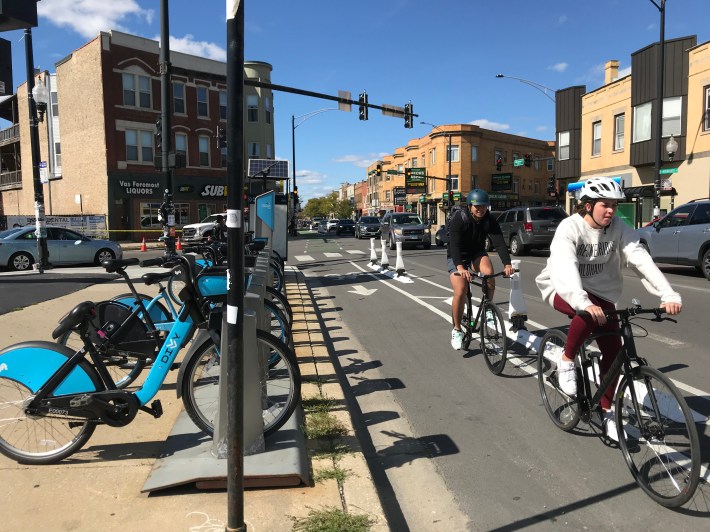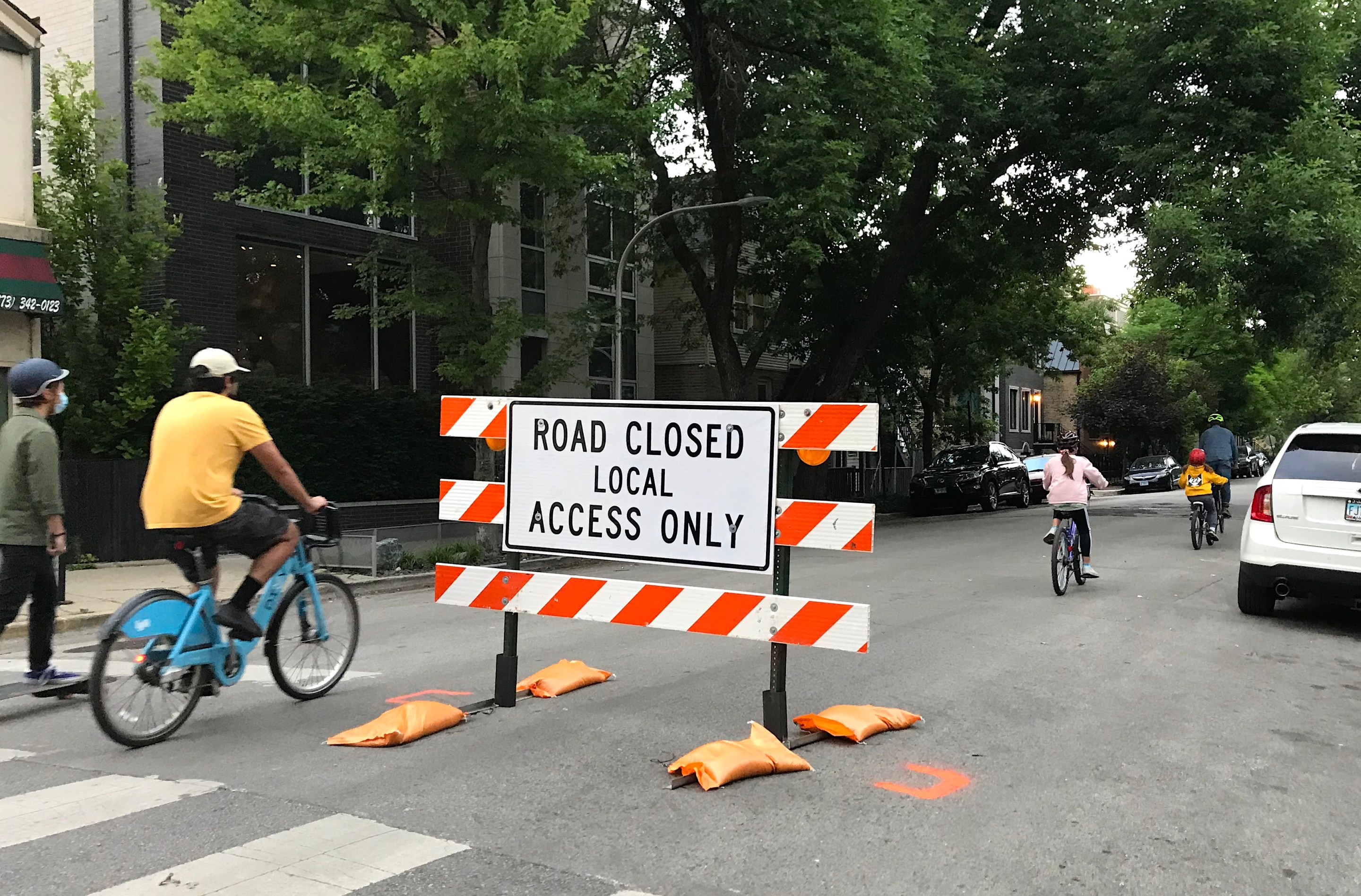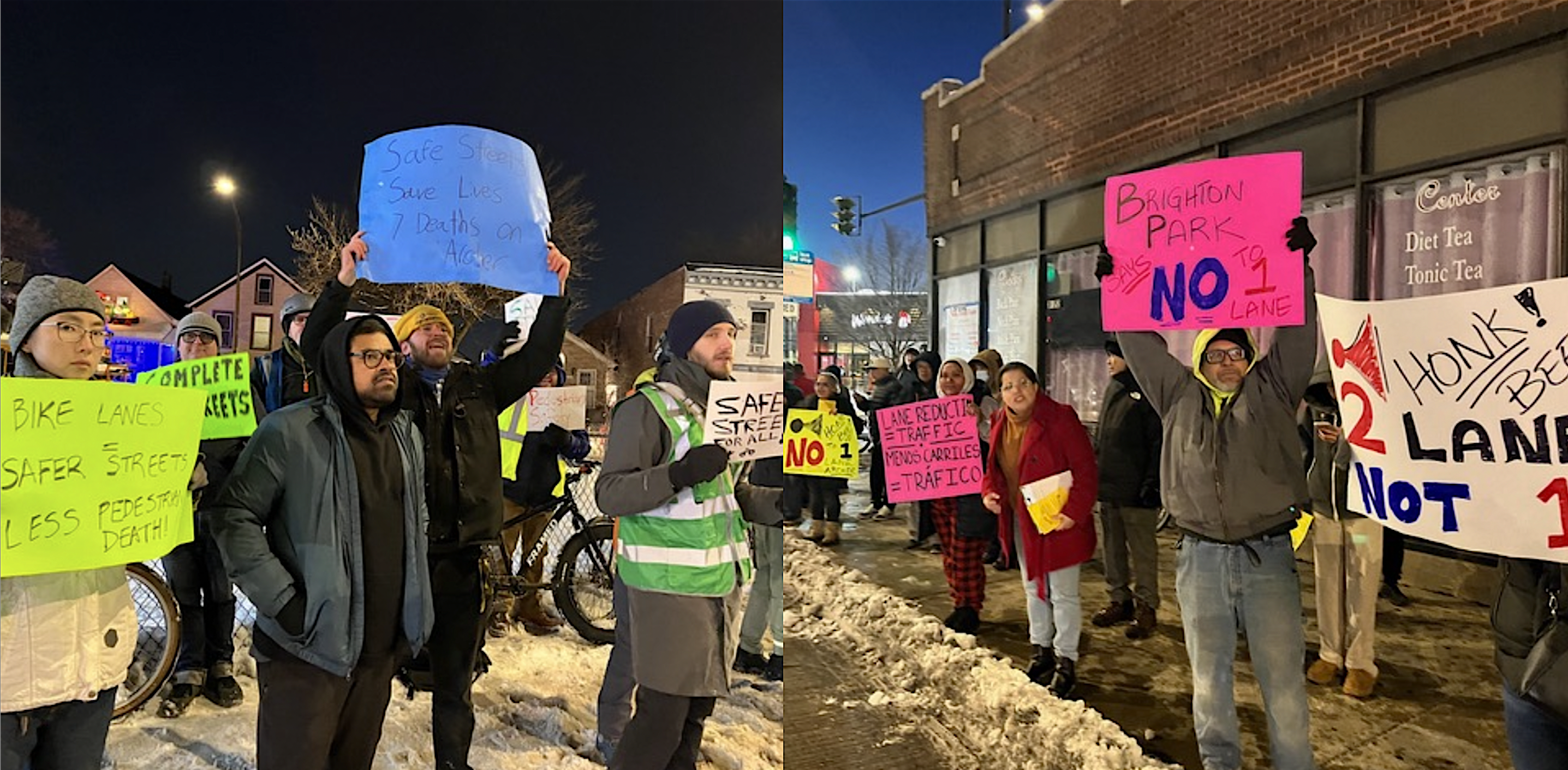At the beginning of this year I was so excited to see 2020 in the date. Something about a new decade just felt significant. Now there are memes about how awful this year has been. COVID-19 has killed more than 325,000 Americans. Millions of individuals and families are struggling financially, thousands of businesses are hanging on by a thread or have closed, state and municipal revenue has significantly decreased, and transit agencies are trying to avoid service cuts in the face of plummeting ridership. Meanwhile, police killings of Black and Latinx people set off protests around the country, with demands for our leaders to acknowledge racial injustices and take action to dismantle systemic racism.
As I think about the active transportation landscape in Chicago this year, I’m compelled to yawn and shrug my shoulders. When it comes to redesigning our streets to make room for safe, socially-distanced sustainable transportation during the pandemic, our city didn’t progress in a substantial way compared to peer cities in the U.S., Europe, and Latin America.
I really envy the speed at which Paris has committed to quickly building hundreds of kilometers of bike lanes, creating car-free places for people, repurposing thousands of parking spaces into more productive uses, and actively working towards becoming a 15 minute city.
Stateside, Oakland and New York City are cities whose COVID transportation response eclipsed ours. Oakland rolled out close to 75 miles of Slow Streets (streets where through traffic is banned to provide more room for safe, comfortable walking, skating, scooting, and biking. According to Transportation Alternatives, New York's leading sustainable transportation advocacy group, NYC set the following goals as a COVID transportation response: 100 miles of Open Streets (1.6 percent of the city’s total street mileage), 20 miles of bus lanes, and 18 miles of bike lanes. To date, 67 miles of Open Streets were realized. However, based on reading the Transportation Alternatives' analysis of Open Streets, most of them were very short in length and the level of investment from the city was minimal. In spite of the small nature of many of New York's Open Streets they have sparked discussions of how to reimagine city space, a conversation I wish we were having in Chicago.
While Chicago got a late start on these kinds of street changes, after some prodding from Streetsblog and advocacy by 47th Ward alderman Matt Martin, the Chicago Department of Transportation launched a Slow Streets program it called "Shared Streets," with the first one debuting on May 29th on Leland Avenue in Martin's district. Eventually the program expanded to 13 miles of roadways in 14 locations, from South Shore to Edgewater.
The Slow Streets treatments featured barricades with "Road Closed: Local Traffic Only" signs and orange traffic barrels with placard announcing the program urging drivers to "Slow Down." Unfortunately the barricades and barrels were easily moved by disgruntled drivers. And the vast majority of Chicagoans never got to experience Slow Streets, in part because of reluctance from some aldermen to give the concept a spin. Overall, the initiative was a small step in the right direction, but it’s going to take a lot more intention and investment to make this city safer for active transportation.
One sobering highlight from Chicago’s transportation landscape in 2020 was the jump in traffic fatalities. According to the Chicago Department of Transportation, our city saw 98 traffic fatalities on surface streets from April to November of this year compared to 68 within the same period last year. This may be due in part to the increase in speeding while traffic volumes have been down during quarantine.
While Chicago has a Vision Zero program with the goal of completely eliminating traffic fatalities, there hasn't seemed to be a real sense of urgency about making streets safer, especially for vulnerable road users on foot and bikes. However, the city did use the spike in traffic deaths as an argument for lowering the threshold for speed camera tickets from 10 mph to 6 mph as part of Mayor Lori Lightfoot's efforts to address the city's budget deficit.

One small bright spot in the 2020 active transportation landscape here in Chicago was the creation of a short section of plastic curb-protected bike lane along Milwaukee Avenue between Armitage and California avenues in Logan Square. The stretch is less than a mile long and many other sections along Milwaukee Avenue could benefit from this treatment. CDOT states they hope to use this relatively cheap and quick bikeway treatment on more routes. I welcome this, along with intersection treatments that prevent drivers from blocking the entrance/exit of these lanes.
All told, CDOT installed 29 miles of new bikeways this year, including 2.9 miles of protected lanes. 17 miles of bikeways were marked on the Far South Side. The department also restriped 50 miles of faded existing bikeways.
Aside from new infrastructure, this was a great year for biking in that, as was the case across the country, many more Chicago residents took up biking for socially-distanced transportation and recreation. The pandemic inspired many Chicagoans to purchase e-bikes or hop on a Divvy which helped the bike share system achieve a new record of 600K rides in August.
In 2020 Chicago also doubled our mileage of bus lanes, albeit from a very small number to begin with, compared to peer cities like New York and Los Angeles. Before the city introduced temporary pop-up bus-only lanes for the #66 Chicago Avenue bus and the #79 79th Street route, we stood at only 3.9 miles of bus lanes. Now we have a whopping eight miles of bus-only lanes.

These pop-up lanes are a step in the right direction, but a pretty half-hearted one, since they lack colored paint or camera enforcement, so it remains to be seen whether drivers will respect them. Unfortunately the city didn’t seize the opportunity to create more bus lanes earlier in the pandemic when the city was in a full lockdown and traffic volumes were lower. Therefore the vast majority of straphangers will not experience the benefits of a faster bus commute.
I am not hopeful that 2021 will move us closer to achieving safer streets for active transportation nor the bus prioritization that is sorely needed. Our transit agencies need more funding to maintain current levels of service so it’s hard to envision major service improvements. CDOT’s funding has largely stayed the same and even if their funding had increased, aldermanic privilege -- the ability of City Council reps to veto projects in their wards -- and lack of agency vision would still hamper efforts to improve cycling conditions in the city. We have a long way to go and I’d love to be proven wrong and see big gains in bus prioritization and cycling improvements next year. We shall see.
You can follow Courtney Cobbs on Twitter @FullLaneFemme.







